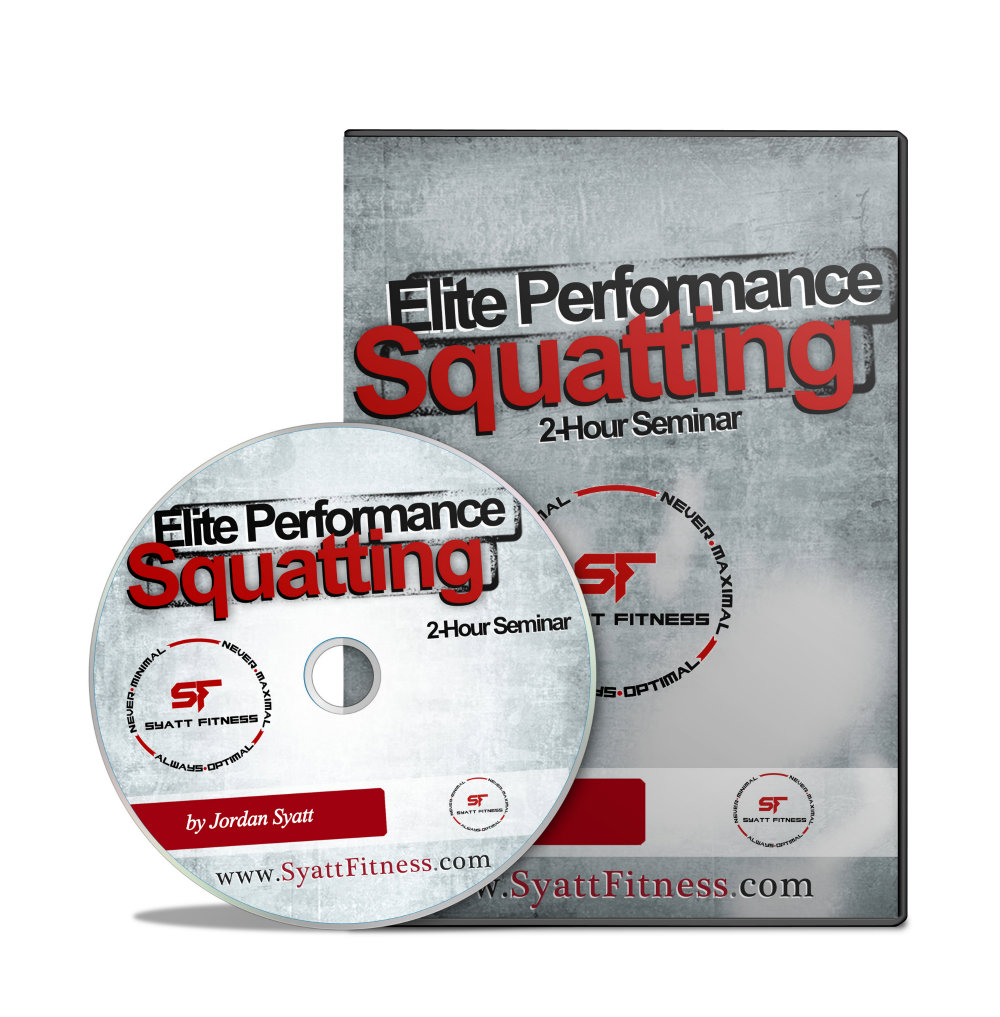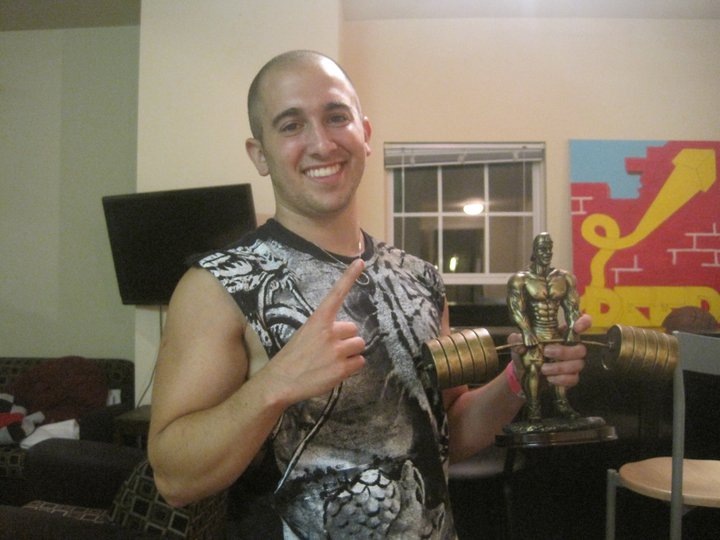3 Squat Myths that Need to Die
Today’s guest post comes from Jordan Syatt, creator of the Elite Performance Squat seminar now available at a specially discounted launch price. Jordan’s broken multiple world records in the squat and deadlift in national powerlifting events, so he knows a thing or two about lifting heavy stuff, as well as how to train for lifting even heavier stuff.
Nowadays, everyone is a fitness expert.
Run a couple cycles of 5/3/1, hit a single bodyweight Deadlift, snap 7,423 shirtless instagram selfies…and BOOM: instant fitness stardom.
I wish I was joking.
The reality is that it’s entirely too easy for people to become respected fitness professionals and, as a result, mindboggilingly insanely stupid sub-optimal advice is rapidly spread throughout the fitness industry.
To put an end to this ridiculousness (yea, it’s a word) I’m going on a rampage de-bunking as many fitness myths as possible.
Today’s Edition: The Barbell Back Squat
As a world record powerlifter and Westside Barbell Certified Strength Coach, I have a lot of experience under the bar and know how to see through the plethora of powerlifting falsehoods.
In this article I’m going to address 3 common squat myths and you’re going to learn exactly how to improve your squat in the least amount of time.
Ready to begin?
Let’s do this.
1. Your Knees MUST Stay Behind Your Toes!
Keyboard jockey’s world-wide will tell you that allowing your knee’s to drift past your toes during the squat will most assuredly blow your knee’s out.
“The shear forces!” they’ll shriek. “They’re abominably high and, in some cases, even cause malaria!”
I may or may not be exaggerating….
What’s interesting is that research found shear forces to be reduced at greater knee flexion angles (Schoenfeld). Specifically, the forces on the ACL and PCL are far less with greater knee flexion angles as there’s less posterior and anterior tibial translation and rotation.
But wait…there’s more!
Not only are shear forces decreased with greater knee flexion angles, shear forces acting on the lumbar spine are actually increased with lesser angles of knee flexion. In other words, trying to keep your knee’s behind your toes during the squat is likely more dangerous for the low back.
It’s important to note that neither option is inherently better or worse than the other. Rather, whatever constitutes “optimal” technique completely depends on you, your biomechanics, and your specific needs, goals, and preferences.
For example, geared powerlifter’s would likely do better maintaining a perpendicular tibial angle in relation to the floor as sitting back into the suit allows them to handle more weight. On the other hand, raw lifter’s tend to be better off sitting straight down and descending into greater angles of knee flexion.
Your Takeaway: Play around with everything and find what works best for you.
[Note from Dean: I wrote an article for T-Nation a little while ago that talks about this exact concept. Check it out HERE]
2. You Need to Arch Your Back as Hard as Humanly Possible
Old school powerlifting dogma advocates a hard arch in the lumbar spine (lower back) as an essential component of “optimal” squat technique.
I disagree.
In fact, I suggest that arching the lower back as hard as possible is detrimental for raw squatters.
While the hard arch is often touted as a valid means of increasing total body tension and reducing the risk of upper back rounding, I’ve found it increases the likelihood of lower back pain (shocker, right?) and inhibits the abdominals from functioning at their highest capacity.
What’s more, through maintaining a neutral spine I’ve noticed (in myself and my lifters) far better squat technique, less chance of the dreaded butt wink, and drastically improved force transfer throughout the entire kinetic chain.
While I agree that arching is beneficial for geared powerlifter’s (those wearing squat suits and supportive gear), it is far from optimal for those of us who train and compete raw.
3. Low-Bar is Better than High-Bar
Wrong.
Low-bar is not inherently better than high-bar.
Having squatted 2.9x bodyweight and competed successfully in both raw and geared powerlifting divisions, I can tell you with utmost certainty that neither is innately better or worse than the other.
But if neither one is better…which do I use?
[embedplusvideo height=”365″ width=”600″ editlink=”http://bit.ly/1d2pbpu” standard=”http://www.youtube.com/v/JYFTd0vxkQM?fs=1″ vars=”ytid=JYFTd0vxkQM&width=600&height=365&start=&stop=&rs=w&hd=0&autoplay=0&react=1&chapters=¬es=” id=”ep5610″ /]
As you saw in the video, whatever constitutes “optimal” bar placement completely depends on what works best for you – not me, Dean, or anyone else.
Just you.
Personally, I tend to opt for a high(er) bar placement as I like to squat with my torso as close to vertical as possible. Placing the bar lower causes me to pitch forward and pseudo-goodmorning the weight back up which, needless to say, increases my risk of injury and decreases my overall performance.
That being said, I know many great squatters who swear by the low-bar position and actually squat worse using high-bar.
So what does this mean for you?
Try both, low-bar & high-bar, and see what feels best for you. Also, keep in mind that what works now might change later on down the road and that’s O.K.! You aren’t required to use any single technique for the rest of your life. Choose what works now and go with it; when (and if) the time comes, don’t be afraid to change things up and try something new.
This concept, the notion of individualization, is what makes my Elite Performance Squat Seminar so unique.
2-hours long and outlining everything you need to know about squat performance, this seminar takes a completely individualized approach to squatting and teaches you exactly how to build your strongest squat in the least amount of time.
In the seminar I cover a variety of topics, such as:
- Full Body Self Assessment and Correction
- Technique Analysis
- Progressions and Variations
- Programming Considerations
Best of all, for this week only (until February 21st) my Elite Performance Squat Seminar is on sale for just $29. After that it’s jumping up to $39 so don’t miss this opportunity.
Do you want to have the strongest, safest, and most efficient squat in your gym?
Download your copy of The Elite Performance Squat Seminar NOW!
Wrapping Up
I hope you enjoyed this article and were able to take away some valuable and applicable information to improve your squat.
If you only take one thing from this piece, though, let it be this: there is no “right” or “wrong.” There is only what works best for you.
Remember, an open mind facilitates a strong body.
Never Minimal. Never Maximal. Always Optimal.
-J






4 Responses to 3 Squat Myths that Need to Die